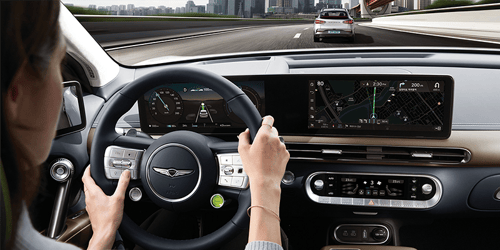Qt Cross-platform now means “on TV” as well!
March 23, 2010 by Daniel Kihlberg | Comments
March 2010 seems to be the Internet Protocol TV (IPTV) / Set Top Box (STB) global convention month with customers showcasing Qt based UIs at two major exhibitions which now are taking place, CCBN in China and IPTV World Forum in England. We are excited to see that Qt value proposition of providing higher productivity gains and rich device functionality is more needed than ever before.
The home media industry now starts to demand increasingly sophisticated UIs and web access in all manner of Internet-enabled handheld devices and infotainment-type deployments. Application convergence across multiple platforms starts and in addition to mobile phone application stores the first HDTV-based application store gets announced.
When the web comes into our living rooms, then Qt cross-platform will mean “on TV” as well. If we compound the news about potential Google TV and Samsung’s interest in driving applications for connected TV’s, it is easier to understand why an increasing number of manufacturers start using Qt as their user interface (UI) creation and application development framework. TCL has done so in their MiTv, and Trident Microsystems is enabling many others to do so by integrating the Qt framework into its latest reference designs for multimedia semiconductor solutions for digital televisions and set-top boxes. Qt is helping drive developer productivity upward and at the same time pushing re-use of code and Qt learning across desktop, mobile and embedded operating systems.
With Qt acting as a productivity-enhancing component in parts of Nokia, Samsung and Trident’s development, the technology has also helped mavericks in the home media industry such as Roku, who used Qt in developing the UI for its Netflix player.
Why is March 2010 special for Qt in the IPTV/STB home media industry – and why is now so important for companies using Qt to push forward in this space?
Essentially, speed matters
Qt has been improved with strong enhancements at the back end for DirectFB support that enables fast 2D graphics hardware accelerations – and this has helped deliver speedy graphics rendering on large HD TV screens in particular. In addition, Qt, with its deep Qt WebKit integration, enables hybrid (native and web) application development to deliver a better user experience. Scripting and native development can be readily combined, and web content easily embedded into a rich device application while maintaining high performance.
Qt is meeting the growing market needs of the connected TV and STB market. So, should you happen to be making a new STB or connected TV any time soon, you know where to find us :-)
Blog Topics:
Comments
Subscribe to our newsletter
Subscribe Newsletter
Try Qt 6.10 Now!
Download the latest release here: www.qt.io/download.
Qt 6.10 is now available, with new features and improvements for application developers and device creators.
We're Hiring
Check out all our open positions here and follow us on Instagram to see what it's like to be #QtPeople.


